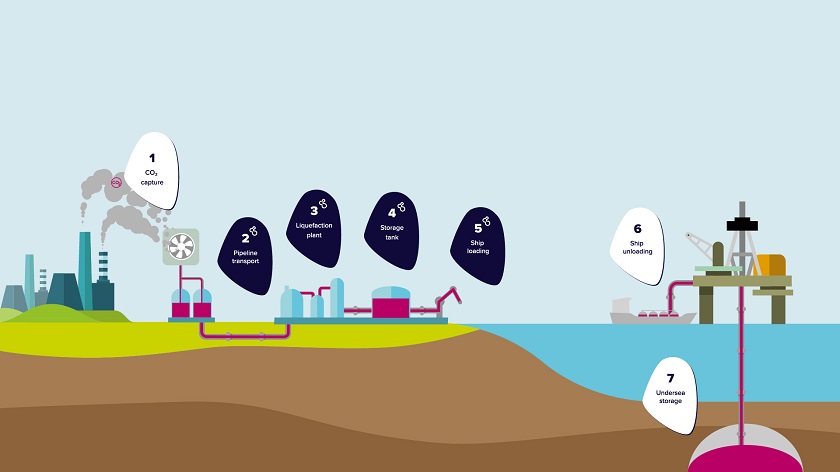What is carbon capture, utilisation, and storage (CCUS)?
As the energy transition is taking shape, impact on climate remains one of the key challenges. Today, researchers, industry and policymakers are collaborating to find ways to reduce our carbon footprint. One promising solution is carbon capture technology.
Carbon capture involves capturing carbon emissions from industrial processes, reusing it as a raw material or transporting it to a storage location, with the aim of preventing it from being released into the atmosphere. The process has been implemented in various forms across the world, and we are starting to see some great success stories.
CCS: storing CO₂ as a residual product
Since it is not possible to reuse all captured CO₂, we store it, for example in empty gas fields. This is called carbon capture and storage, or CCS. These underground sites are naturally sealed and airtight, so the CO₂ is safely stored. To achieve a climate-neutral economy in the short term, capturing and storing CO₂ will be absolutely essential.
Underground CO₂ storage is a safe technology, as evidenced by more than 40 years of successful offshore storage in Norway, and more recent projects in Canada and the United States. Norway's Equinor and its partners have, since 1996, been storing about one million tonnes of CO₂ per year in the North Sea – in the Utsira formation in the Sleipner field.
In the European Union, an EU directive calls for efforts to be made to identify suitable storage sites and ensure their safe operation. Through the Net Zero Industry Act, the EU has set a target of 50 million tonnes of CO₂ injection capacity by 2030.
CCU: Reusing CO₂ as a raw material
For certain industries, captured CO₂ is a valuable resource. This is called carbon capture and utilisation, or CCU. In agriculture and horticulture, CO₂ is (re)used to make crops grow faster while energy producers use liquid CO₂ as a coolant. The possibilities are only growing. Who knows, ships may soon be powered by methanol from captured CO₂. Or plasma reactors might split the molecule back into carbon and oxygen.
Fluxys has teamed up with several industrial partners in Wallonia in co₂ncreat, a circular project using captured CO₂ to make sustainable concrete blocks for the construction industry. A 2 km pipeline built and operated by Fluxys will transport the CO₂ between the emitter and the block producer.
To be continued!
CCUS: Frequently asked questions
-
How is CO₂ stored?
-
What is the role CCUS can play in the energy transition?
-
Where does CO₂ come from?
-
Where in Europe is CO₂ stored?
